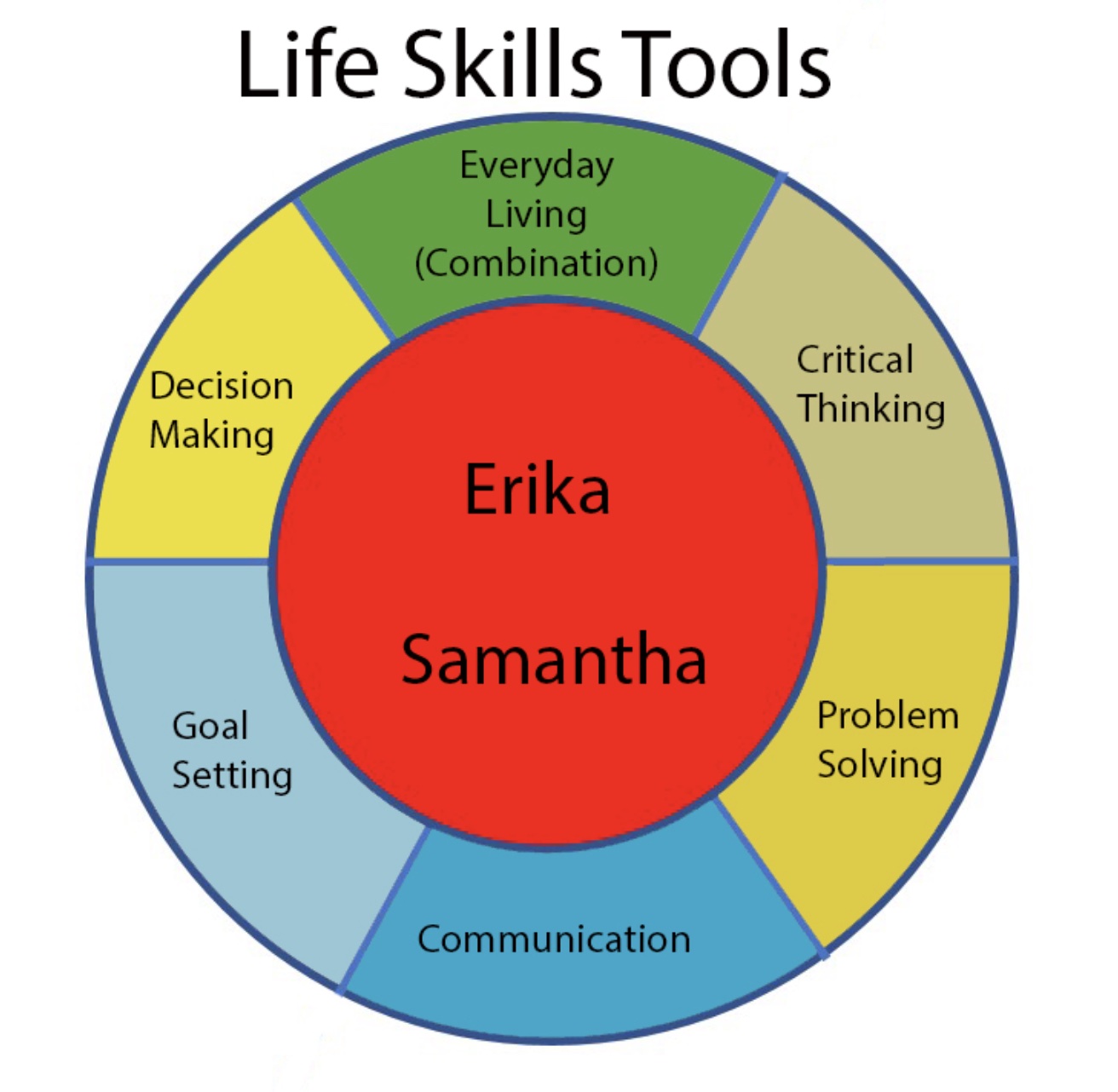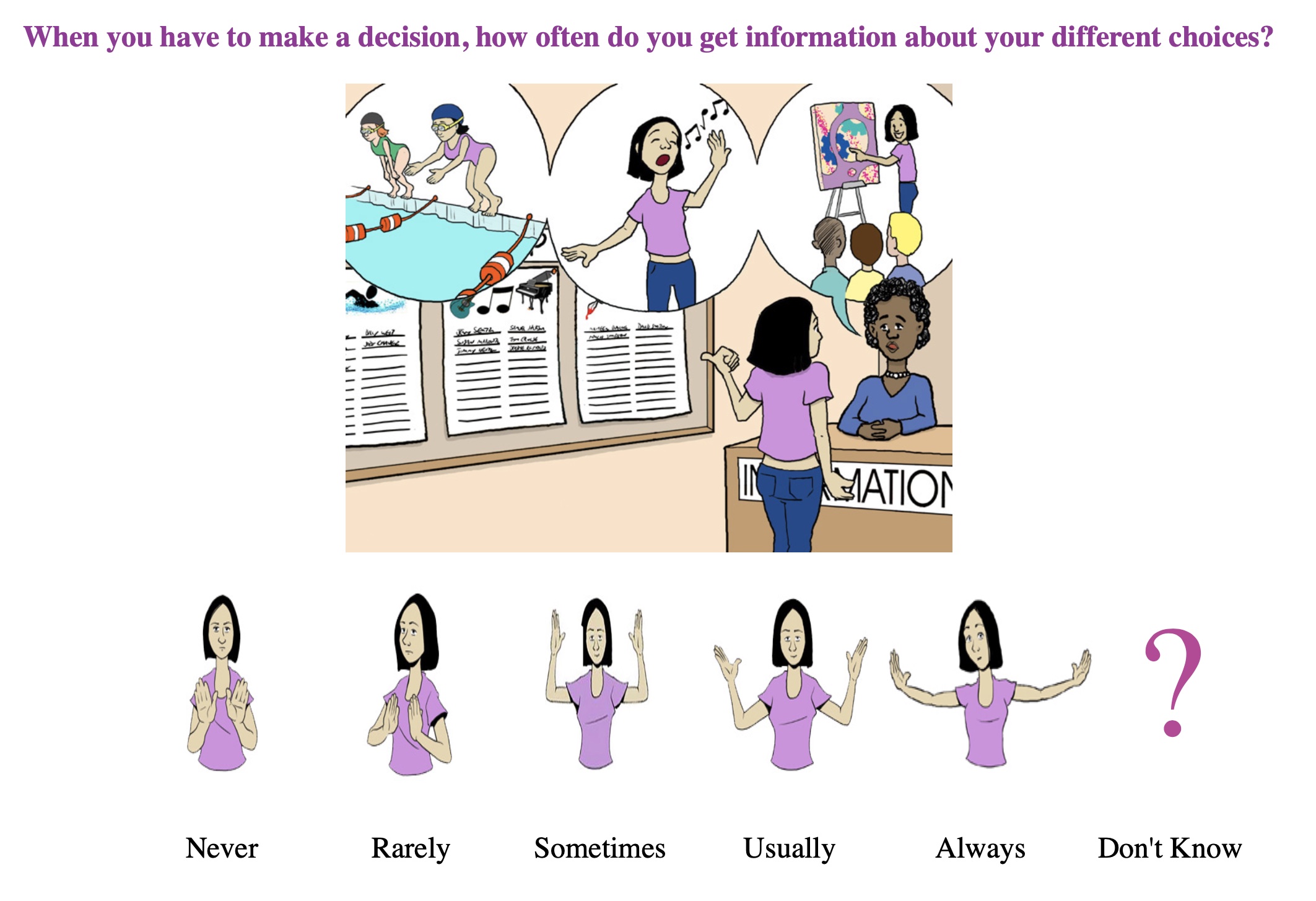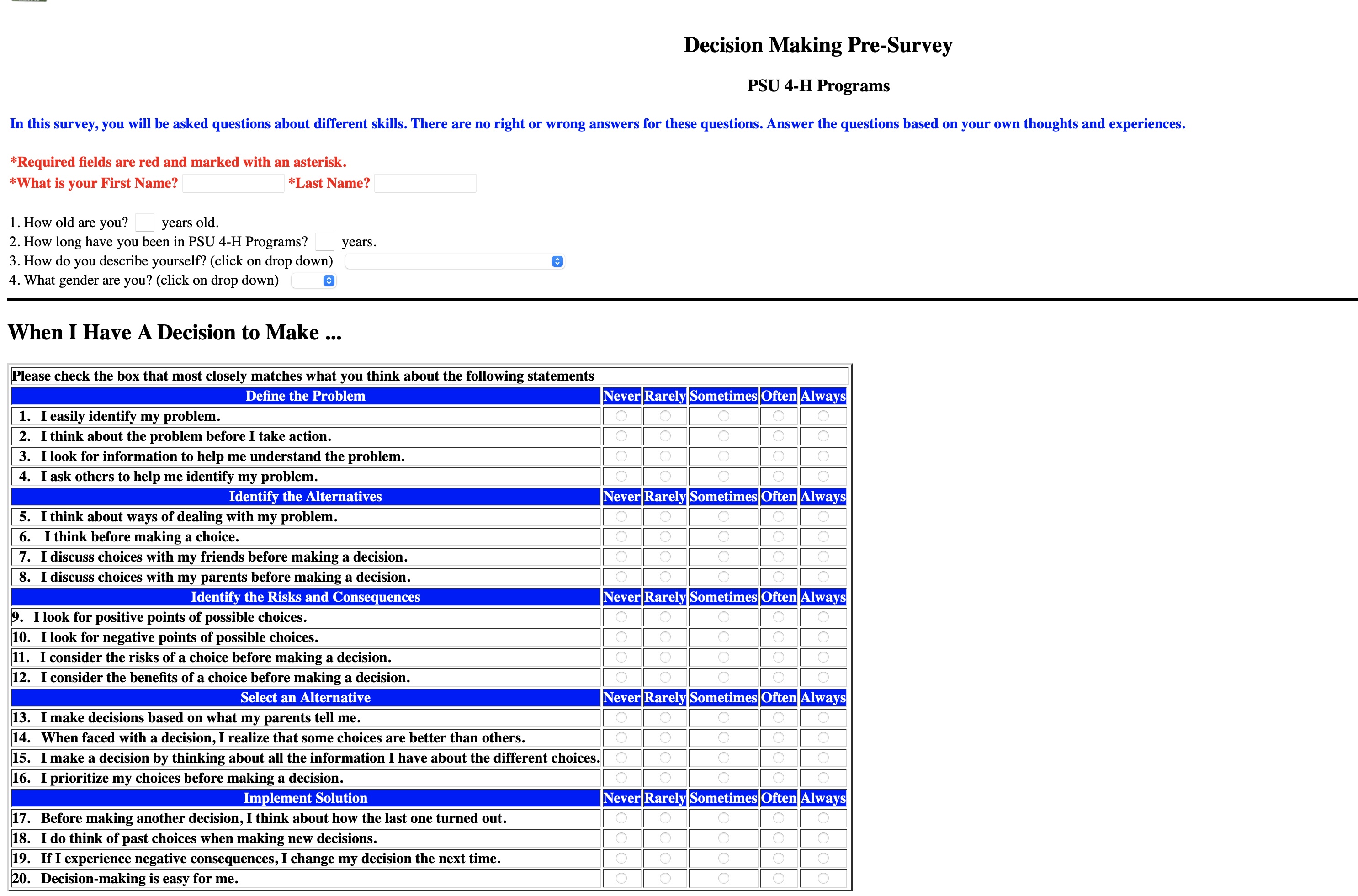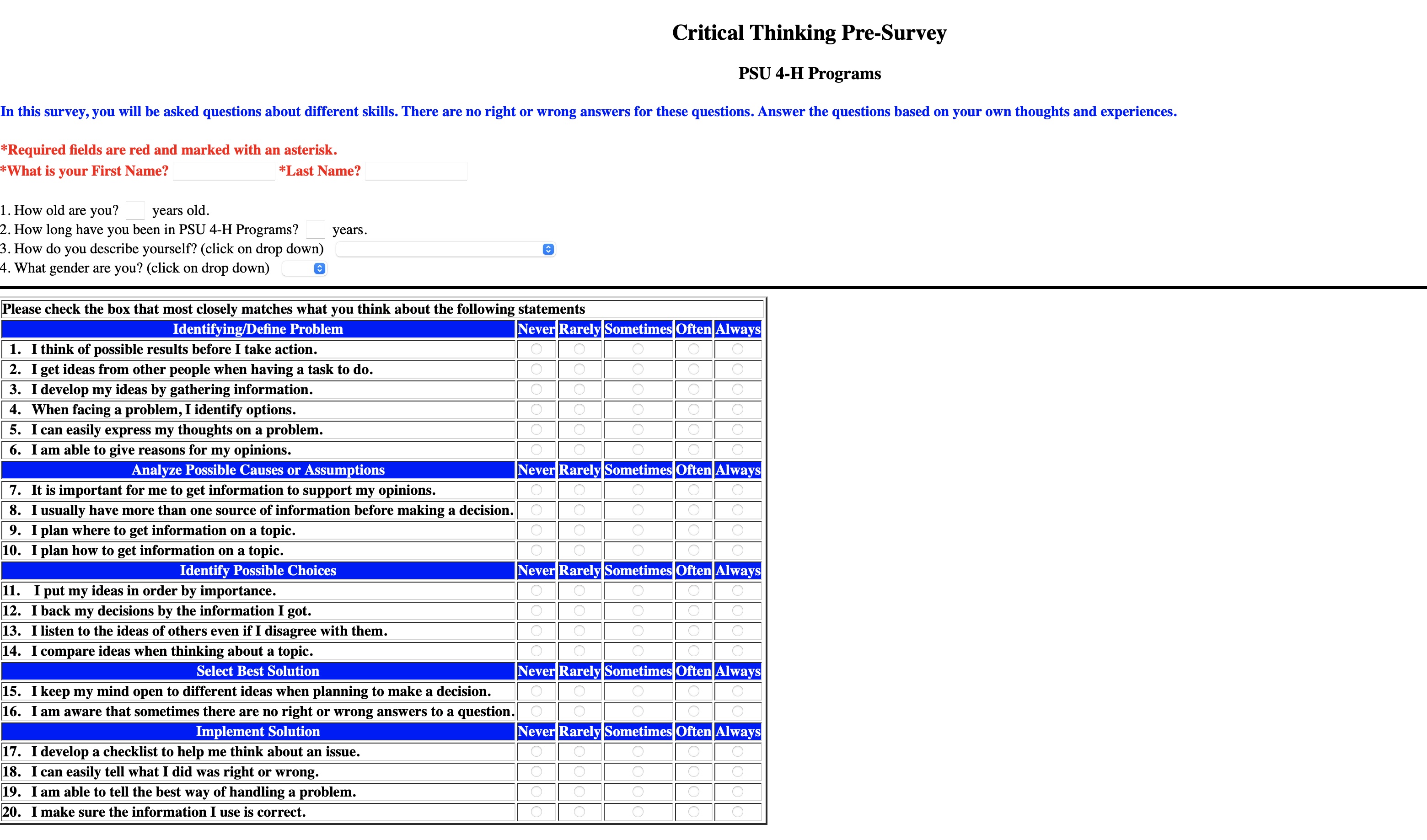

|
The Youth Life Skills evaluation system is designed to help youth development professionals, teachers, parents, and other caring adults to assess children and youth on life skills that can enhance outcomes regarding diversity, science, leadership, citizenship, art, and more. To help in deliberately planning activities and programs, assessing strengths and weakness in life skills of their children and youth, and assess change and impact. One of the first questions to be answered in getting started is what tool to pick? We suggest you read through the sub-areas of importance or constructs for each of the tools and examine how well they fit with your objectives and program plan. You may also want to look at the questions within each of the sub-areas of importance for each of the tools. Note that ERIKA and SAMANTHA are interactive tools that utilize characters in scenarios to address multiple life skills that include audio for youth who may have literacy or language issues. ERIKA is intended for children and younger youth while SAMANTHA is best for older youth. If you have questions or need assistance contact Human Service Research. |
 |
| ERIKA and Friends Life Skills |
| ERIKA is an interactive tool for children utilizing scenarios and characters that set the stage to ask life skill questions from the following constructs. While ERIKA incorporates much from the questionaries below, it has three new constructs: Caring, Personal Values, and Social Conscience. Audio is included for young children and children with literacy issues. |
|
1. Decision Making 2. Critical Thinking 3. Caring 4. Personal Values 5. Social Conscience |  |
| Samantha and Friends Life Skills |
| SAMANTHA is an interactive tool for youth utilizing scenarios and characters that set the stage to ask life skill questions from multiple constructs. While Samantha incorporates much from the questionaries below, it also has: School, After School, Curiosity, Creativity, and Social Conscience. Audio is included for youth with literacy or second language issues. |
|
1. School 2. Curiosity 3. After School Activities 4. Decision Making 5. Critical Thinking 6. Communication 7. Creativity 8. Goal Setting 9. Problem Solving 10. Social Conscience |  |
| Everyday Living Life Skills |
|
The Everyday Living Life is survey form that is a combination of all five tools below that contain sub-constructs for each of the areas. |
|
1. Decision Making 2. Critical Thinking 3. Communication 4. Goal-Setting 5. Solving Problems |
 |
| Decision Making |
|
Making decisions is the process of identifying and selecting a choice among possible alternatives and then evaluate the consequences of that choice. This survey assesses youth’s decision-making ability by examining the frequency of use of the following skills that are needed to engage in sound decision-making. |
|
1. Define the Problem 2. Identify the Alternatives 3. Identify the Risk and Consequences 4. Select an Alternative 5. Implement Solution |
 |
| Critical Thinking |
|
Critical thinking is defined as thinking that evaluates reasons and brings thought and actions in line with evaluations. Youth may know how to access and locate, interpret, and apply information. However, if they do not invest any time in evaluating the information they use, their efforts often result in a low-quality product. Worse, failure to evaluate may result in unfavorable outcomes especially when associated with flawed information. This survey will assesses youth’s critical thinking ability by examining the frequency of use of the following skills that are needed to think critically. |
|
1. Identify/Define Problem 2. Analyze Possible Causes or Assumptions 3. Identify Possible Choices 4. Select Best Solutions 5. Implement Solution |
 |
| Communication |
|
Oral communication is the dynamic process by which people exchange thoughts, ideas, and messages. Listening is the act of interpreting sounds and/or visual stimuli and using those interpretations to give them meaning. This survey assesses youth’s ability to communication by examining the frequency of use of the following skills that are needed to use effective communication practices. |
|
1. Awareness of one’s own styles of communication 2. Understanding and valuing different styles of communication 3. Practicing empathy 4. Adjusting one’s own styles of communication to match others' styles. (Communicative adaptability) 5. Communication of essential information 6. Interaction management |
 |
|
Goal–Setting |
|
Goal-setting is the process of setting benchmarks, monitoring progress, and utilizing feedback to achieve a targeted result. This survey assesses youth’s goal setting ability by examining the frequency of use of the following skills that are needed to set realistic goals. |
|
1. Goal difficulty 2. Goal specificity 3. Participation in goal setting (strategies, self-monitoring, incentives) 4. Feedback |
 |
|
Problem Solving |
| Problem Solving is the process of using reasoning and analysis to look beyond the surface of a problem to the underlying concepts that need to be part of the solution. It is a process of recognizing and correctly defining problems, creating and implementing solutions, and evaluating the results of those solutions. This survey assesses youth’s problem-solving ability by examining the frequency of use of the following skills that are needed to engage in problem-solving; |
|
1. Identify/Define the Problem 2. Analyze Possible Causes or Assumptions 3. Identify Possible Solutions 4. Select Best Solution 5. Implement the Solution 6. Evaluate Progress and Revise as Needed |
 |
| Ecomaps |
Ecomaps are useful tools for mapping out your child's/youth's world. The ecomap should show all the people in her/his world, especially the family members, and all the support people and systems that surround the child/youth. Life skills development is critical in navigating our world and our relationships that play into our decisions, goals, and how we solve problems. The ecomaps over time may show change (positive or negative) and some of our future steps. People and things missing from the picture may say as much as who and what is in the child's/youth's world. Like the Life Skills Tools - conversation with your child/youth about their world, relationships, and what they want to do can be very informative. |
|
Sub-Areas 1. People and Things Directly and Indirectly Involved with child/youth 2. Roles 3. Relationships |  |
|
Instructions for implementing the tool Note this tool is paperbased only. |
|
Accessibility and Human Service Research Human Service Research, Inc. is committed to making the tools and resources accessible as possible to children, youth, and families. To see a video and resources click here. |